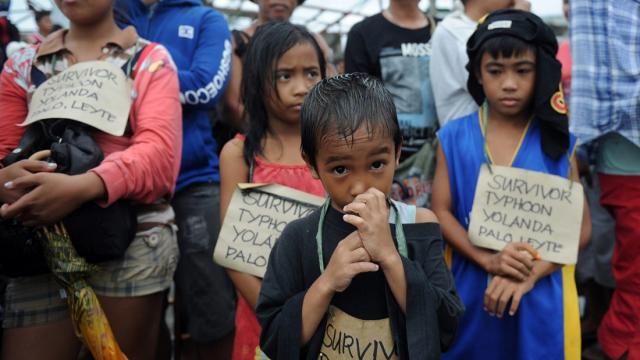
The world's richest 10 percent of people are responsible for producing about half of all carbon emissions, and the average carbon footprint of the richest 1 percent is about 175 times that of the poorest 10 percent, according to a report released Wednesday.
The paper, "Extreme Carbon Inequality," released by the global charity Oxfam, comes as world leaders are gathered in Paris for COP21 — a United Nations conference aimed at agreeing a new global climate treaty to mitigate the worst effects of climate change.
"While the COP21 in Paris will see a deal negotiated between governments on the basis of the total emissions produced in their territories, the real winners and losers will be their citizens," the report reads. "The litmus test of the deal will be whether it delivers something for the poorest people who are both the least responsible for and the most vulnerable to climate change, wherever they live.”
The 3.5 billion people that make up the poorest half of the globe produced just 10 percent of emissions — yet they live in places that are particularly vulnerable to the effects of global warming, including from catastrophic storms, severe droughts, and rising seas and flooding, the report said. Their governments are also less likely to have the resources to adapt to and mitigate those effects, the report added.
The reported cited a recent study by the World Bank that found the poorest people in any country are most exposed to disasters including heat waves, flooding, and droughts — especially in countries in Africa and South East Asia.
For example, when Typhoon Haiyan devastated the Philippines in 2013, killing over 7,000 people, it left the country with a humanitarian crisis so extensive it had to borrow money from other countries to rebuild — leaving the country with at least $1 billion to pay back.
The same inequalities can also be seen in wealthy countries, including the United States, where its poorest residents in Louisiana, Mississippi and Alabama are disproportionately threatened by rising seas and coastal flooding, the report said. When Superstorm Sandy hit New York City in 2012, over a third of the people in the storm surge area lived in government-assisted housing, and half of the city's public housing residents were displaced, it added.
"Climate change and economic inequality are inextricably linked and together pose one of the greatest challenges of the 21st century," Tim Gore, Oxfam's head of food and climate policy and author of the report, said.
The report shows that the richest 10 percent of the U.S., about 30 million people, produces three times as many emissions as the 600 million people that constitute China’s poorest half; while the poorest half of the U.S. produces five times the amount of emissions as the poorest half of India.
By the end of COP21, each country is expected to submit final plans for cutting emissions and transitioning to green economies. Those actions will aim to help keep the global temperature increase since preindustrial times below 2 degrees Celsius (3.6 Fahrenheit). At the current pace of carbon emissions, the world is on track for a nearly 3 C rise by 2100, the U.N. has said. The earth has already passed the 1 C hotter mark, according to U.K. researchers who released new data last month.
"Paris must be the start of building a more human economy for all — not just for the 'haves,' the richest and highest emitters, but also the 'have-nots,' the poorest people who are the least responsible for and most vulnerable to climate change," Gore said in the release.
3 WAYS TO SHOW YOUR SUPPORT
- Log in to post comments















